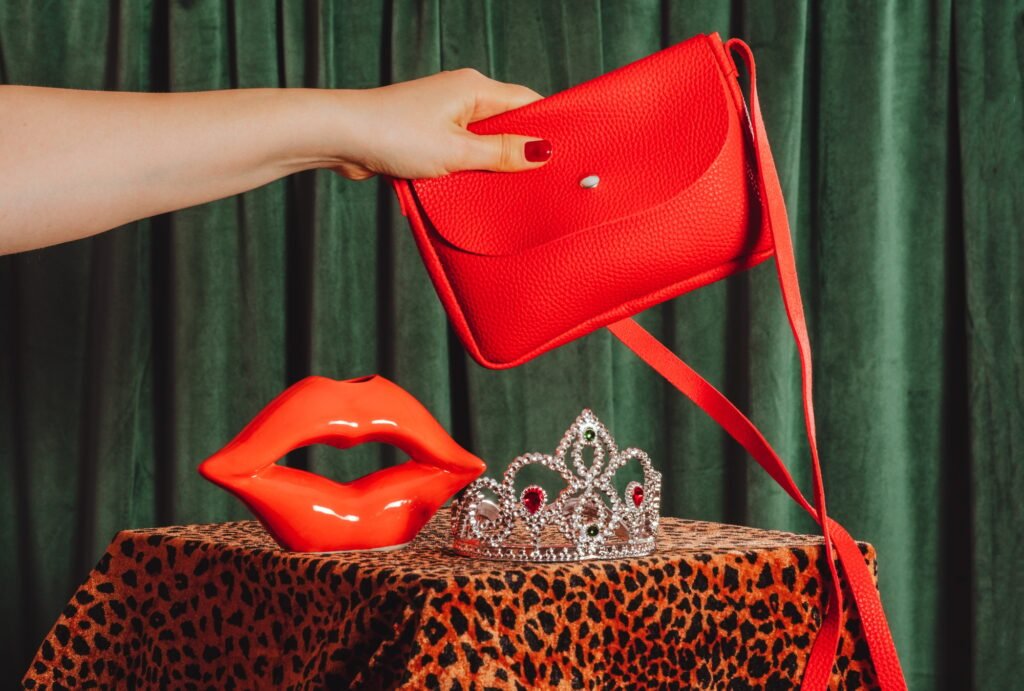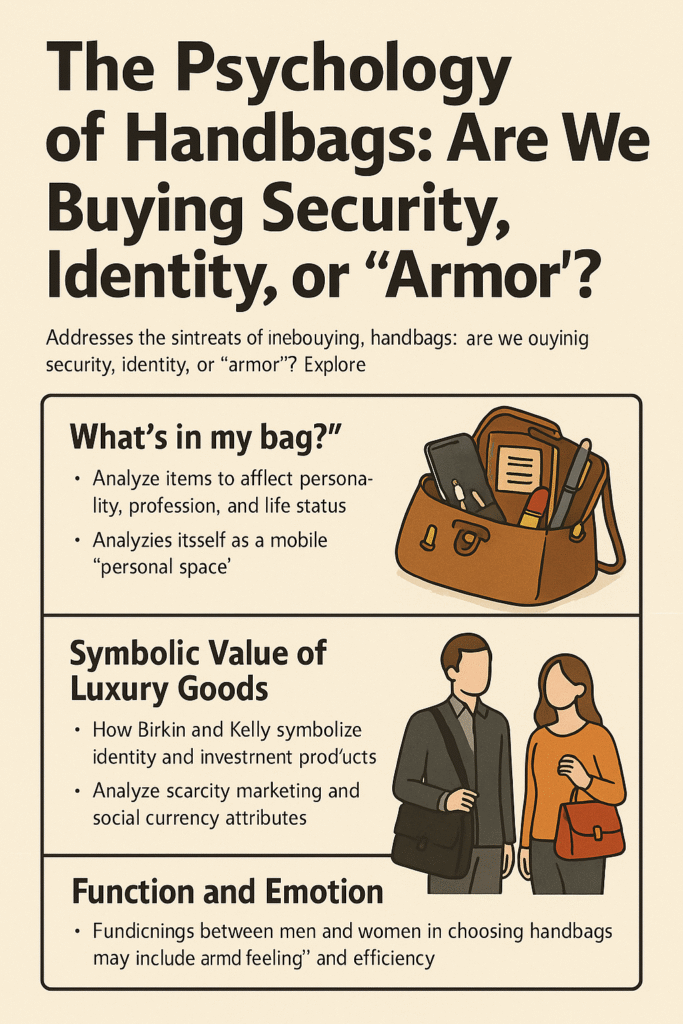Everyone’s wardrobe always has a few favorite handbags – they can not only hold keys, wallets, and mobile phones, but also seem to hold our emotional needs. Why do we pay for a handbag? Is a handbag really just a “container”? From fast fashion to luxury brands, from “buy, buy, buy” to “disassembly”, handbags have long surpassed the boundaries of function and become the most personal “armor”, a symbol of identity, and even an extension of self-expression. Today, we will interpret the psychological code behind handbags from three perspectives.
What is handbag psychology?
“Handbag psychology” is a field that studies the psychological motivations and social implications reflected by people when they choose and use handbags. It combines consumer psychology, sociological semiotics and self-identity theory to help us understand:
- Security needs: handbags become a “mobile personal space” that makes people feel that they can control the situation anytime and anywhere.
- Identity and belonging: show social status or group belonging through brands and styles, such as brand loyalty and peer circle influence.
- Armor mentality: Handbags are not only accessories, but also “arms” to face the challenges of daily life, giving people confidence and strength.

The deeper meaning of “What’s in my bag?”
On the surface, “What’s in my bag” is just a curiosity about other people’s belongings, but behind it actually reveals a deeper self and career portrait.
- Objects reflect personality: What are the must-haves? What small things are carried with you? People who like to be clean and tidy and only carry mobile phones and card bags are often simple and efficiency-oriented; people who carry notebooks, cosmetic bags and various charging cables may prefer diversity and rich emotions.
- Career and life status: Designers or journalists may carry notebooks and tablets with them, which means they can capture inspiration and information at any time; while the “auntie bag” of new parents may have more bottles and handkerchiefs, reflecting family responsibilities.
- Personal space extension: Handbags are like a “private little universe” that you carry with you, which briefly reveals the owner’s preferences, values and security needs – and also allows us to have a psychological connection with others.
The symbolic value of luxury goods
When the price of handbags soars to tens of thousands of dollars, people are no longer just paying for the function, but for a period of scarcity, an identity authorization and potential investment.
Birkin and Kelly’s social “pass”
- Scarcity marketing: Hermès Birkin is limited worldwide, and the queuing mechanism creates a shortage of supply, making the owner feel like a member of an exclusive club.
- Social currency: At high-end banquets and fashion parties, carrying a Birkin is equivalent to showing identity, circle and aesthetics.
Investment product attributes
- The secondary market price of branded handbags has been stable or even rising all year round, and is regarded as an alternative “anti-inflation asset”.
- In recent years, the rise of handbag rental and second-hand trading platforms has also proved its continued appreciation potential.
Function and emotion: Differences in bag selection between lady and gentleman
In terms of the functional and emotional needs of handbags, people often have different focuses:
Men’s “armed feeling” and efficiency
- They often choose briefcases and small crossbody bags, pay more attention to functional divisions and capacity, and pursue quick access and safe protection of essential items such as mobile phones, keys, wallets, etc.
- Some professional men (such as lawyers and consultants) often have laptop compartments in their handbags, which symbolize professional image and meet the needs of efficient office work.
Women’s matching and storytelling
- They are sensitive to colors, materials, and detailed decorations, and love to switch handbags in different occasions to match the overall shape and mood.
- Many women are keen on the “story behind the handbag”, such as the Parisian niche brand bag handed down by their grandmother, or the Bohemian handbag found in the street market when traveling, each bag carries emotional memories.
Despite the obvious differences, genders are constantly blending: more and more women prefer simple and capable neutral bags, and men are also starting to try small leather shoulder bags. The functional and emotional sections of handbags are becoming diversified.
Conclusion
Handbags have evolved from functional accessories to carriers of our psychological and social identity – they not only hold daily items, but also carry a sense of security, identity labels and emotional sustenance. The next time you take out your bag, think about it: which “self” is leading the birth of this bag?

FAQ
A: First, clarify the main needs – daily commuting pays more attention to capacity and partitions, while social activities care about appearance and brand atmosphere. Choosing a model based on this can achieve twice the result with half the effort.
A: If you have a sufficient budget and have a certain understanding of the second-hand market, you can regard limited edition classic models as long-term investments. But you need to pay attention to the risk of counterfeits and storage costs.
A: You can list the top 3 needs in your mind (function, matching, brand), and set a monthly budget or try to carry the experience to ensure that you buy the one that is “useful, carryable, and bright”.



